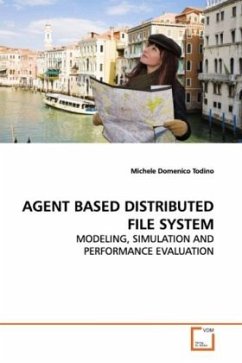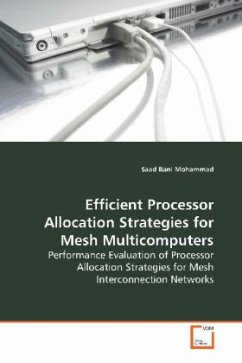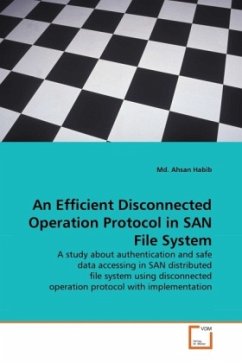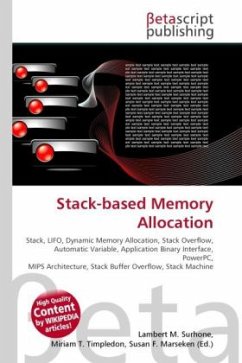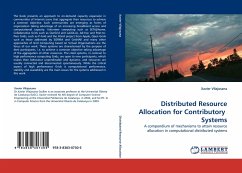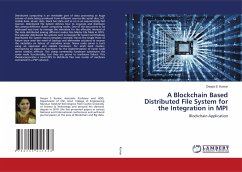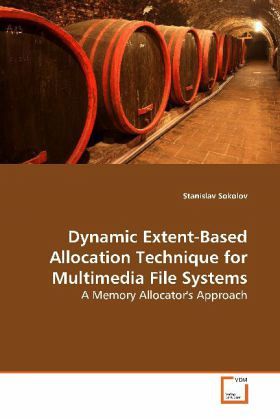
Dynamic Extent-Based Allocation Technique for Multimedia File Systems
A Memory Allocator's Approach
Versandkostenfrei!
Versandfertig in 6-10 Tagen
52,99 €
inkl. MwSt.

PAYBACK Punkte
26 °P sammeln!
This thesis investigates the efficiency ofextent-based allocator design to satisfy fileallocation requests in a CDN proxy cache. Theallocator is based on the method inspired by thememory allocators, where free space is managed inchunks of varying size, or extents. The design istested in a simulation, where a trace of allocationand deallocation events from a content server wassubmitted to the allocator. The bottleneck forcontent retrieval often lies on data transfer ratesof the hard disks used in the server. To facilitatefastest possible transfer of a file, it must be readsequentially. At the s...
This thesis investigates the efficiency of
extent-based allocator design to satisfy file
allocation requests in a CDN proxy cache. The
allocator is based on the method inspired by the
memory allocators, where free space is managed in
chunks of varying size, or extents. The design is
tested in a simulation, where a trace of allocation
and deallocation events from a content server was
submitted to the allocator. The bottleneck for
content retrieval often lies on data transfer rates
of the hard disks used in the server. To facilitate
fastest possible transfer of a file, it must be read
sequentially. At the same time, given the large
quantity of files, space wastage due to incomplete
utilisation of large allocation units is not
desirable. Our allocator design tries to achieve both
mutually exclusive goals. The design was implemented
and the results we obtained in the course of
simulation, show that we managed to achieve these
goals, creating an allocator that displays
properties, favourable for contiguous file placement,
while keeping space wastage at its minimum.
extent-based allocator design to satisfy file
allocation requests in a CDN proxy cache. The
allocator is based on the method inspired by the
memory allocators, where free space is managed in
chunks of varying size, or extents. The design is
tested in a simulation, where a trace of allocation
and deallocation events from a content server was
submitted to the allocator. The bottleneck for
content retrieval often lies on data transfer rates
of the hard disks used in the server. To facilitate
fastest possible transfer of a file, it must be read
sequentially. At the same time, given the large
quantity of files, space wastage due to incomplete
utilisation of large allocation units is not
desirable. Our allocator design tries to achieve both
mutually exclusive goals. The design was implemented
and the results we obtained in the course of
simulation, show that we managed to achieve these
goals, creating an allocator that displays
properties, favourable for contiguous file placement,
while keeping space wastage at its minimum.



